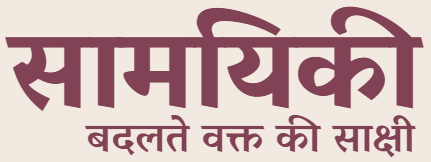E-governance, where and for whom?
This piece originally appeared in my column ‘Reality Bytes’ in issue dated 14th Oct, 2002 of the Free Press Journal, an English daily published from Indore, India.
In a recent seminar on “IT and communication challenges and opportunities in Madhya Pradesh” speakers, many of whom where amongst the who’s who of Indore’s IT fraternity, were extremely hopeful that MP could very well become the next Cyberabad. The official websites of MP do not lag behind in blowing the trumpet either. Sad fact is, the condition of IT in MP is a far cry from it even being regarded as an IT savvy state; leave alone the proposition of it becoming an IT destination.
It is a matter of grave concern that the second largest Indian state which could have become a hub of commercial activities owing to its geographical location, cheap man-power, low cost-of-living and good social infrastructure is nowhere near its IT ambitions. Thanks to the lethargic attitude of government the state of power and roads has not only marred common public but also reduced the Industrial bases at Mandideep, Urla and Pithampur to shambles and petrified the prospective entrepreneurs appropriately. Moreover the state government has been notoriously unsuccessful in marketing and establishing relationship with international companies (we are yet to notice the repercussion of the MOU signed with Microsoft).
It’s worth pondering as to how the state government plans to bring investors to MP. There seems no dearth of IT manpower in MP; it has 36 Engineering colleges of its own, apart from host of Private training institutes. But there has never been any government initiative to ensure that the courses in these institutions are industry specific and practical oriented and that IT training and education be granted some incentives. The state may boast of an optical fibre backbone of 20000Km across 45 districts, the highest coverage in the country, but lacks the backbone of political will. Despite of promising projections on ITES, the state has minuscule players in the area, with perhaps the LNJ Bhilwara group the only big one. Ironically, ITES providers from other states are continuously visiting and hiring manpower from MP while their own state’s capabilities languish in kumbhakarni sleep.
It’s said that the MP government is ahead of many other states in the area of e-governance. It plans to convert all its data into digital-form. That’s a good idea, though I wonder who will have the time to go through them. Fortunately, the showcase project initiated in the Dhar district won many accolades. However reports say that the warts have started to show now. The Gyandoot project worked very well till the person who headed it was moved to another post.
As a matter of fact this is the problem everywhere – programmes such as Gyandoot are hardly self-sustaining – they last only so long as a very upbeat administrative official at the top holds his position; they start to rot as soon as the officer under whom the programme is mooted moves out. Interestingly, the project at Dhar was to be funded by the panchayats themselves. Revenue officials had even collected a small amount from farmers towards this. But the farmers reportedly go to the kiosks to obtain certificates or other details for getting financial credit, and more often than not come away because the communication link is not working or there is no electricity.
Applying e-governance Mukhya-mantri jiis not a child’s play. You have to ensure that the idea itself comes from the local population. Two other very crucial problems are of maintenance and language. The maintenance of computers and kiosks is a very complicated problem in far-flung areas, not to mention the ubiquitous problems of crashing telephone lines and electricity supply. Meaningfully interactive software is still not available in Indian languages. It would be puerile to expect the dehati people, who cannot read or write their own language, cope up with English. The other problem pertains to the ruggedness of the terminal or kiosk itself. If farmers must operate the machines themselves, the machines are bound to develop wear and tear problems.
The pertinent fact is that the government must make a distinction between pure e-governance projects, which might be for the internal administrative convenience, and mass-use projects. The areas of concern in making MP an IT enabled state are, as one survey said, lack of proper IT training, resistance of staff and post-sales hardware support. Also the government should not think of being an IT destination while standing on the crutches of manpower and capabilities of other states. It has to train, empower and use its own people. At the same time it should extend its open invitation and incentives to all entrepreneurs and companies who fear to tread in here.
I hope by e-governance the government does not mean to simply prepare a graveyard of computers. To bring IT to masses it surely will need to ask the people first what they needed and then set about designing programmes. MP cannot overnight become the state of Cyberabad, the steps should be gradual but firm. Gyandoot was a good beginning but learning lessons from its fallout would be the greater challenge.




